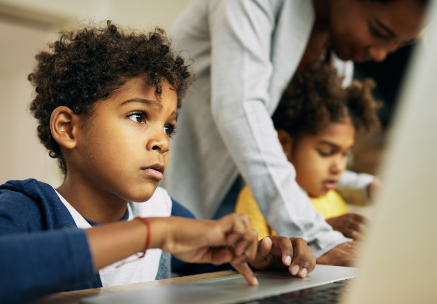Innovation thrives when learners are empowered to think critically, explore creatively, and solve real-world problems. Personalized learning, with its emphasis on student-centered instruction and flexibility, creates the ideal conditions for innovation to flourish in the classroom. By tailoring education to individual strengths, interests, and goals, personalized learning nurtures not only academic growth but also the curiosity and independence that fuel innovative thinking.
Fostering Student Agency and Ownership
When students are given choices in what, how, and when they learn, they develop a sense of ownership over their education. This agency fosters:
- Confidence in decision-making
- Initiative in exploring new ideas
- Responsibility for learning outcomes
As students take control of their learning, they are more likely to experiment with creative approaches and generate original solutions.
Supporting Inquiry-Based and Project-Based Learning
Personalized learning environments often incorporate inquiry-based or project-based learning (PBL), which promote innovation by:
- Encouraging students to ask questions and seek answers
- Applying knowledge to real-life challenges
- Allowing for open-ended outcomes and diverse perspectives
These methods mirror the innovation process, giving students experience in brainstorming, prototyping, testing, and revising ideas.
Embracing Failure as Part of Growth
In a personalized setting, the learning process is seen as continuous, and setbacks are viewed as opportunities for improvement. Students are encouraged to:
- Reflect on their work
- Make revisions based on feedback
- Persevere through challenges
This growth mindset is essential for innovation, as it builds resilience and a willingness to take creative risks.
Integrating Technology and Digital Tools
Technology plays a key role in both personalized learning and innovation. Digital platforms and tools allow students to:
- Design and create multimedia projects
- Collaborate virtually with peers and experts
- Access a wide range of resources for research and development
These opportunities enable students to become producers—not just consumers—of information, sparking innovation in how they learn and express ideas.
Connecting Learning to Real-World Contexts
Personalized learning often allows students to pursue topics that are relevant to their lives and communities. When students see the real-world impact of their learning, they are more motivated to:
- Identify authentic problems
- Propose thoughtful, innovative solutions
- Engage in civic-minded and socially conscious projects
This relevance fuels intrinsic motivation and a desire to create meaningful change.
Encouraging Collaboration and Diverse Thinking
Personalized learning doesn’t happen in isolation. It supports flexible group work and interdisciplinary approaches, helping students:
- Share ideas with diverse peers
- Build empathy and understanding
- Combine insights from multiple fields to innovate collaboratively
Innovation often emerges from collaboration, and personalized environments provide the structure and freedom for these interactions to thrive.
Conclusion
Personalized learning encourages innovation by giving students the tools, space, and support to explore, create, and lead. By centering education around the learner and emphasizing curiosity, relevance, and self-direction, educators can nurture a generation of thinkers and problem-solvers prepared to innovate in any field. In a world that increasingly values creativity and adaptability, personalized learning offers a powerful foundation for future-ready learners.














